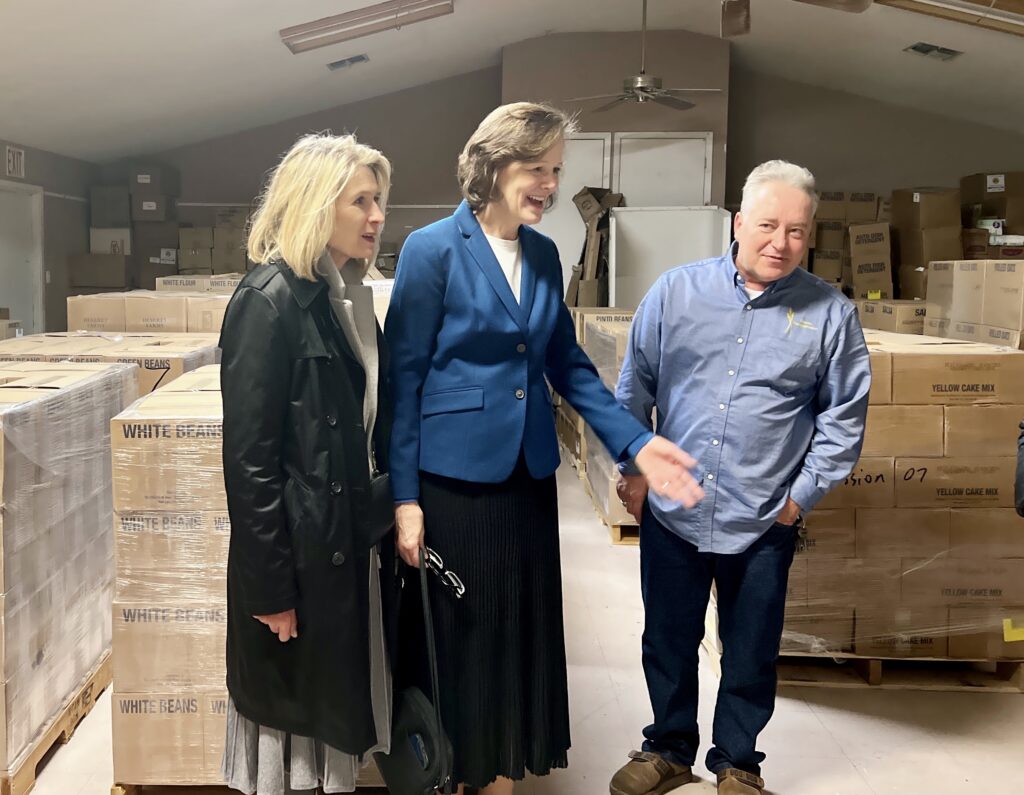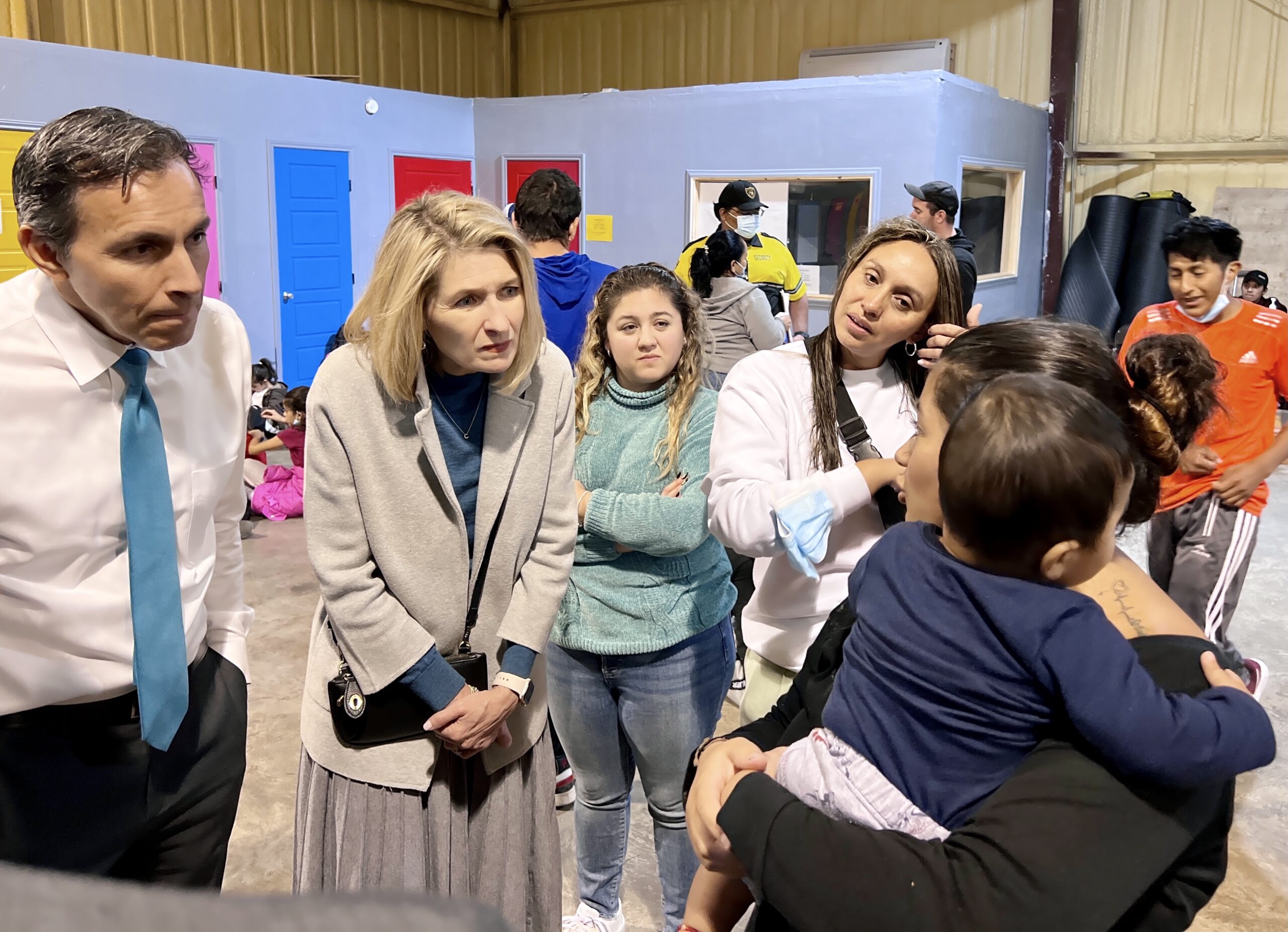by Leisa Parsons, Area Media Specialist
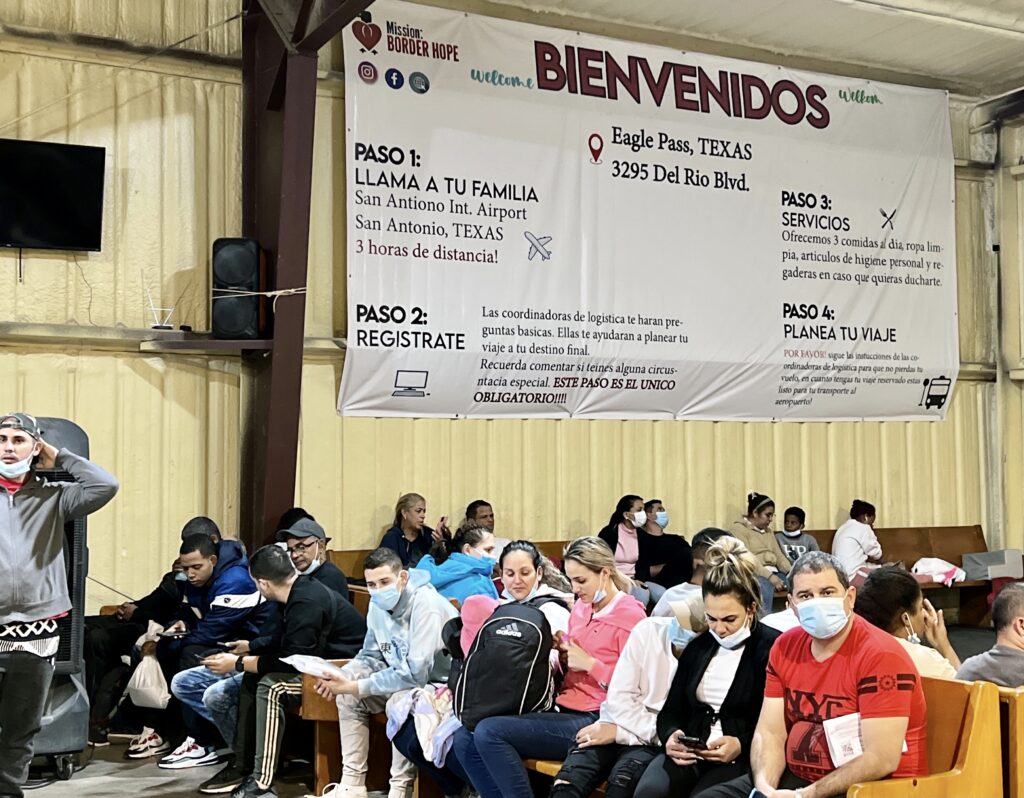
Mission: Border Hope received a great deal of attention from the Church of Jesus Christ of Latter-day Saints on Friday. Located in Eagle Pass, Mission: Border Hope aids asylum seekers in their journey to reach family members in the United States. It was another typical day for Mission: Border Hope on Friday, as they welcomed over 700 asylum seekers. They were offered shower facilities, hot meals, clean clothes and many, many travel plans were made.
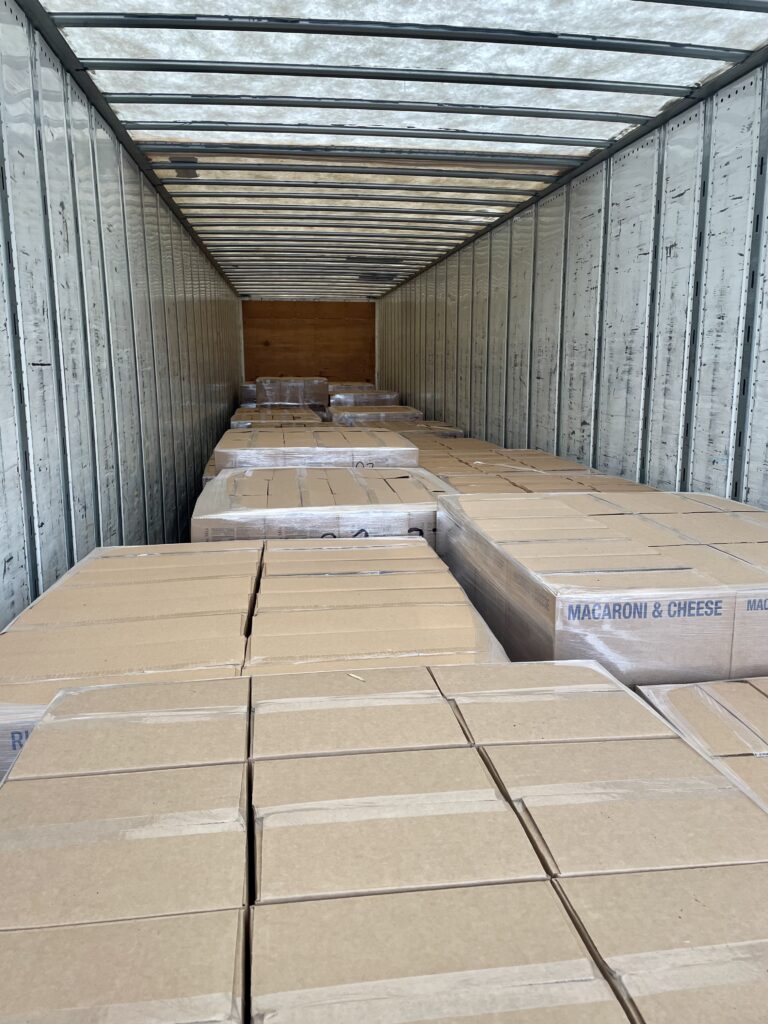
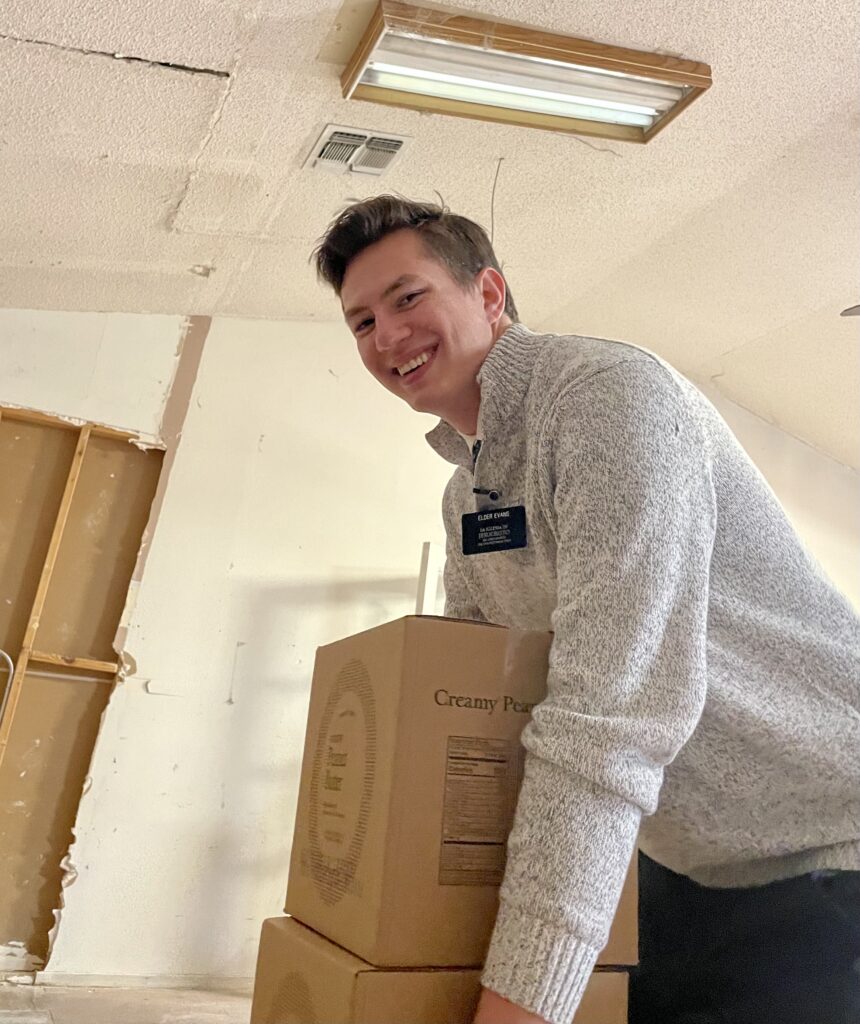
Early Friday morning a truck arrived from the Church’s Humanitarian Services with 24 pallets of food for Mission: Border Hope’s kitchen. The boxes of beans, cake mixes, pasta, peanut butter, stew and many other items will help them in their goal of feeding and welcoming the asylum seekers. Missionaries and others helped unload the truck, fully filling the facility’s storage area.

On Friday evening, President Camille Johnson, Relief Society General President and President Susan Porter, Primary General President for the Church, arrived to tour Mission: Border Hope’s facility and meet many of the asylum seekers. They were accompanied by Area Authorities, Elder Jorge Contreras and Elder Art Rascon.
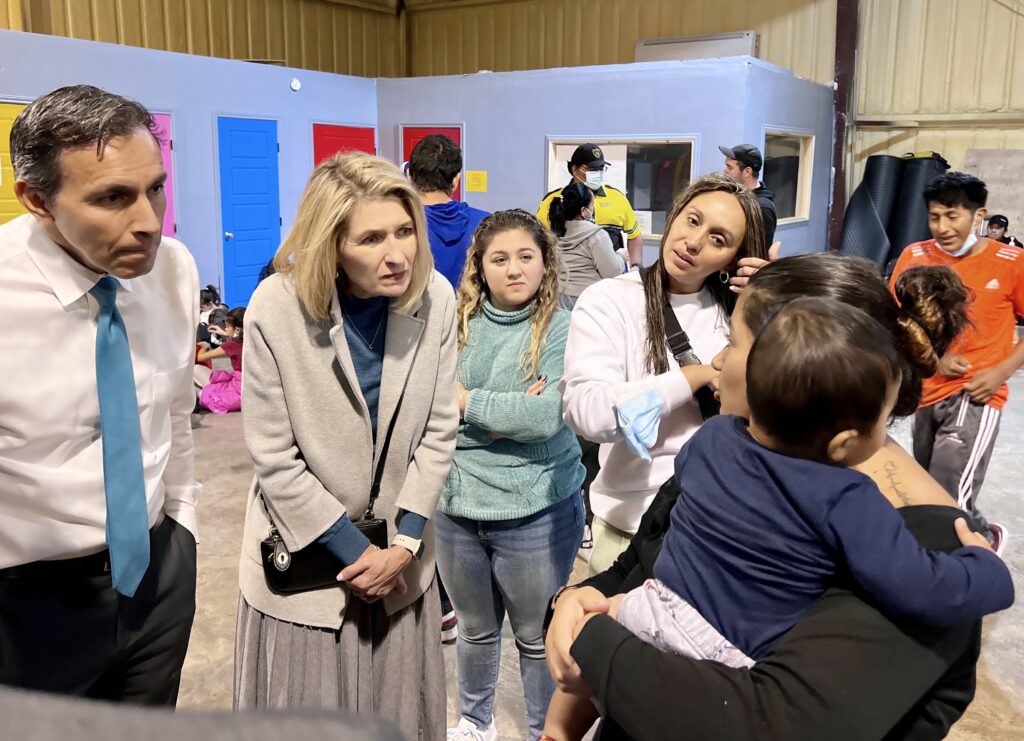
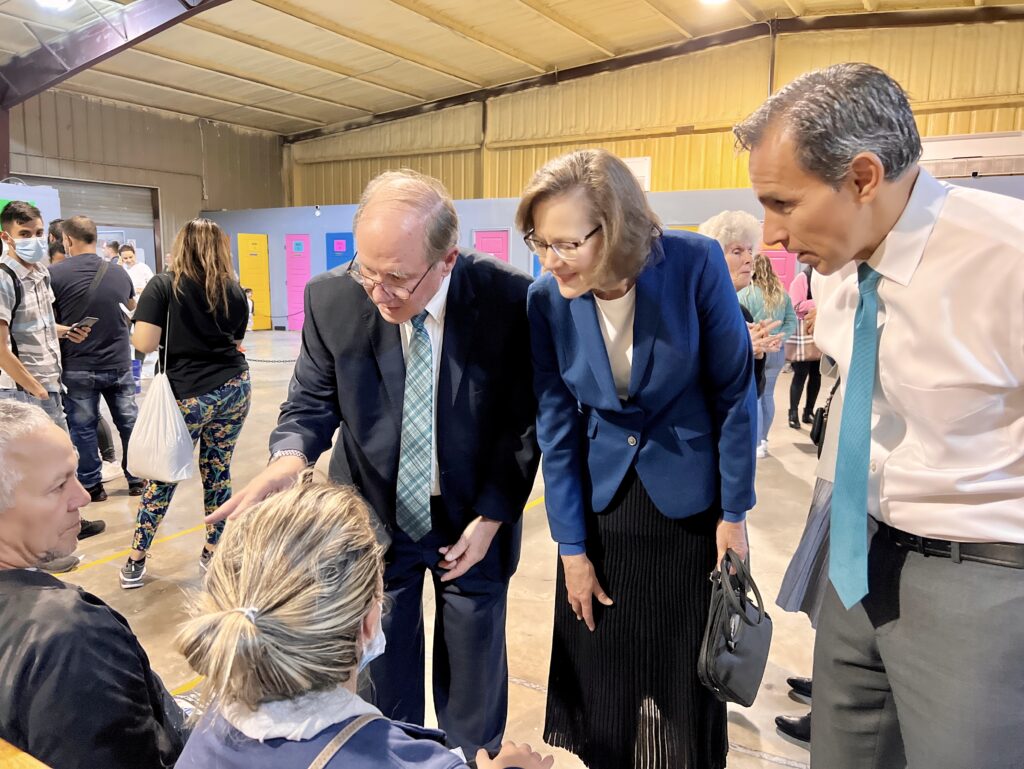
Elder Rascon and President Johnson were visiting with one man who had traveled from Quito, Ecuador with his wife who is a few months pregnant. They are awaiting transport on one of the free busses, sponsored by the state, heading to New York. Their ultimate destination is with family in Queens, New York.
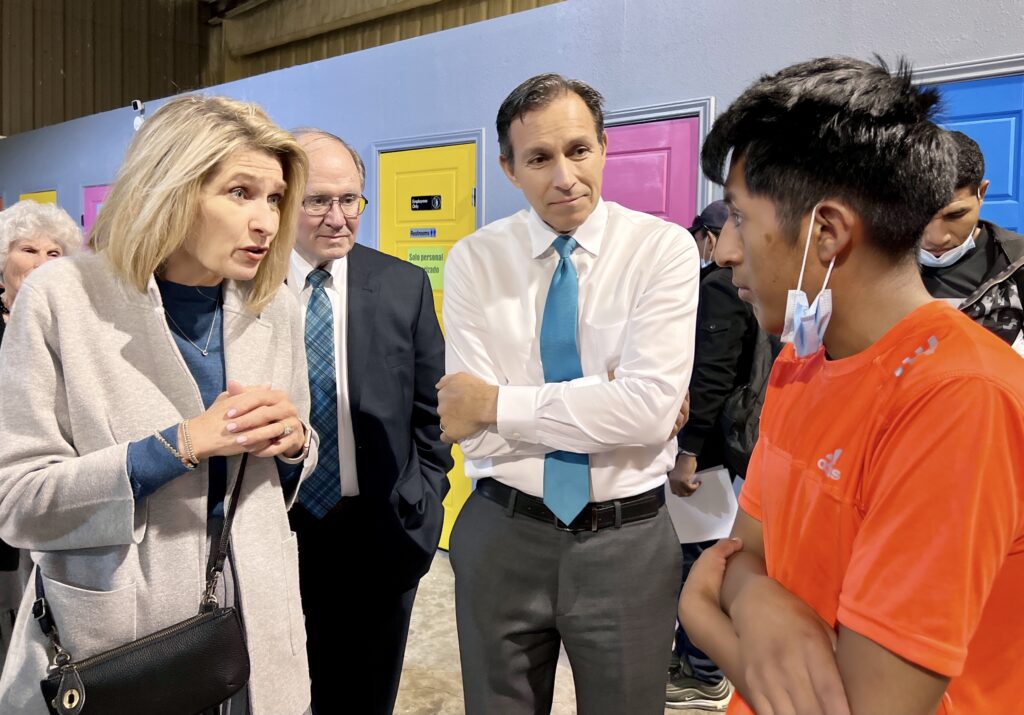
The Church visitors heard many stories of their journeys that brought them to Eagle Pass, most on foot, some with a few bus segments sprinkled in between. They heard of their hopes for freedom and better opportunities for their families. The spirit of Mission: Border Hope is one that is palpably felt as care and service are extended to “the least of these”.

Sisters Johnson and Porter were also touched as they saw the large amount of food that had been delivered earlier in the day. Asking what more the Church could do to help, Diana Rodriguez, of Mission: Border Hope mentioned clothing, “warm clothing is needed now.”
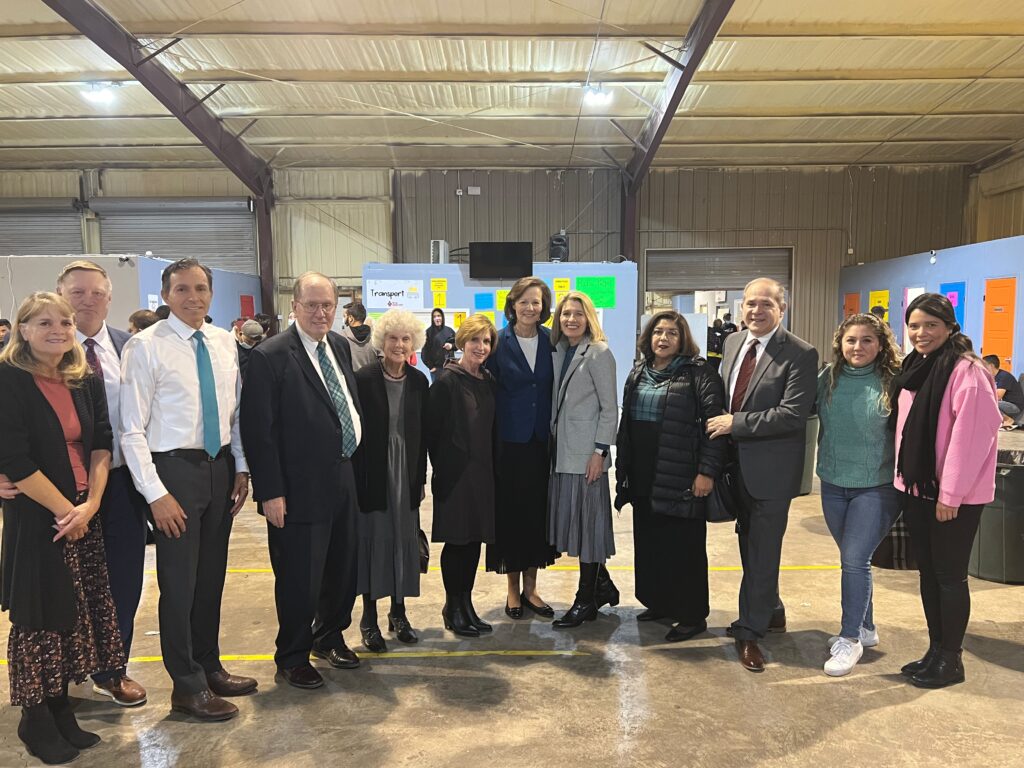
Sisters Johnson and Porter also met with Sigrid Gonzales, who works with Homeland Security and is a senior advisor for Customs and Border Patrol. Gonzales spoke of the journey of many of the immigrants, their processing and their background checks. She said there are two types of immigrants, the “getaways and the give-ups.”
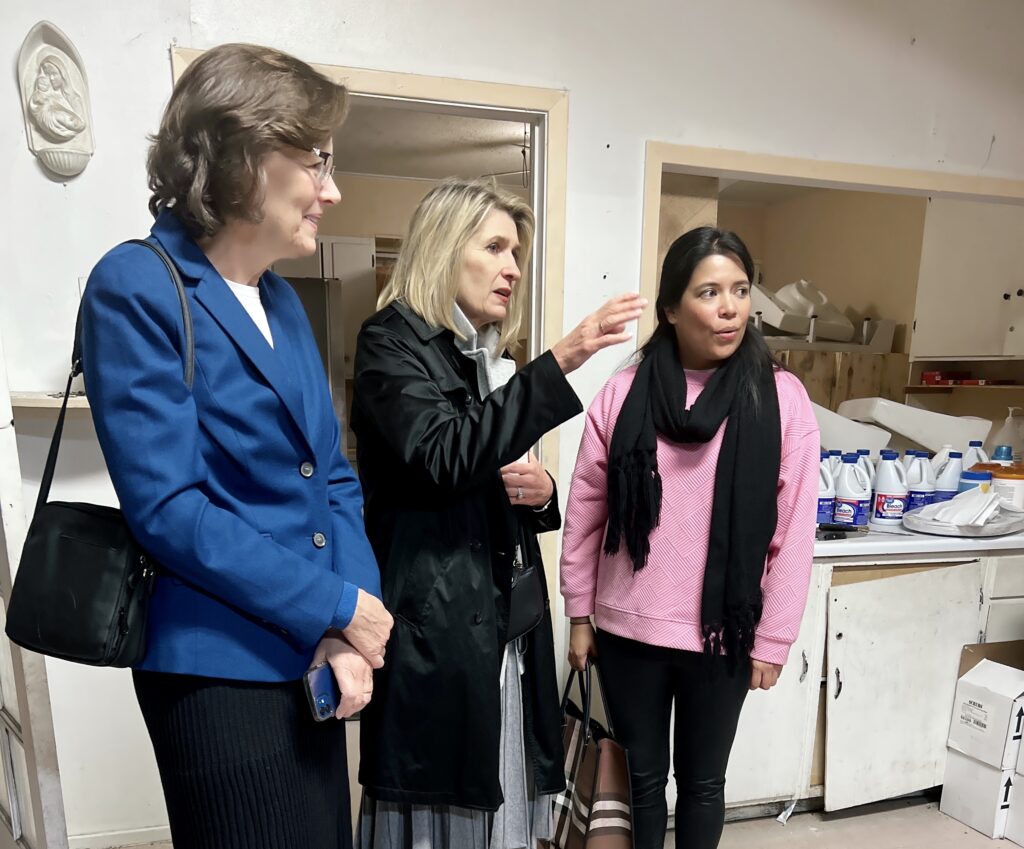
Gonzales continued, “The give-ups are the people who turn themselves in and from there, they have different pathways. We receive them, we process them, and get their fingerprints. If something pops up during the check, we send them to I.C.E. for removal proceedings. If they are unaccompanied children, without anyone, we send them to HHS (Health and Human Services) for them to be reunited with their families in a separate process.”
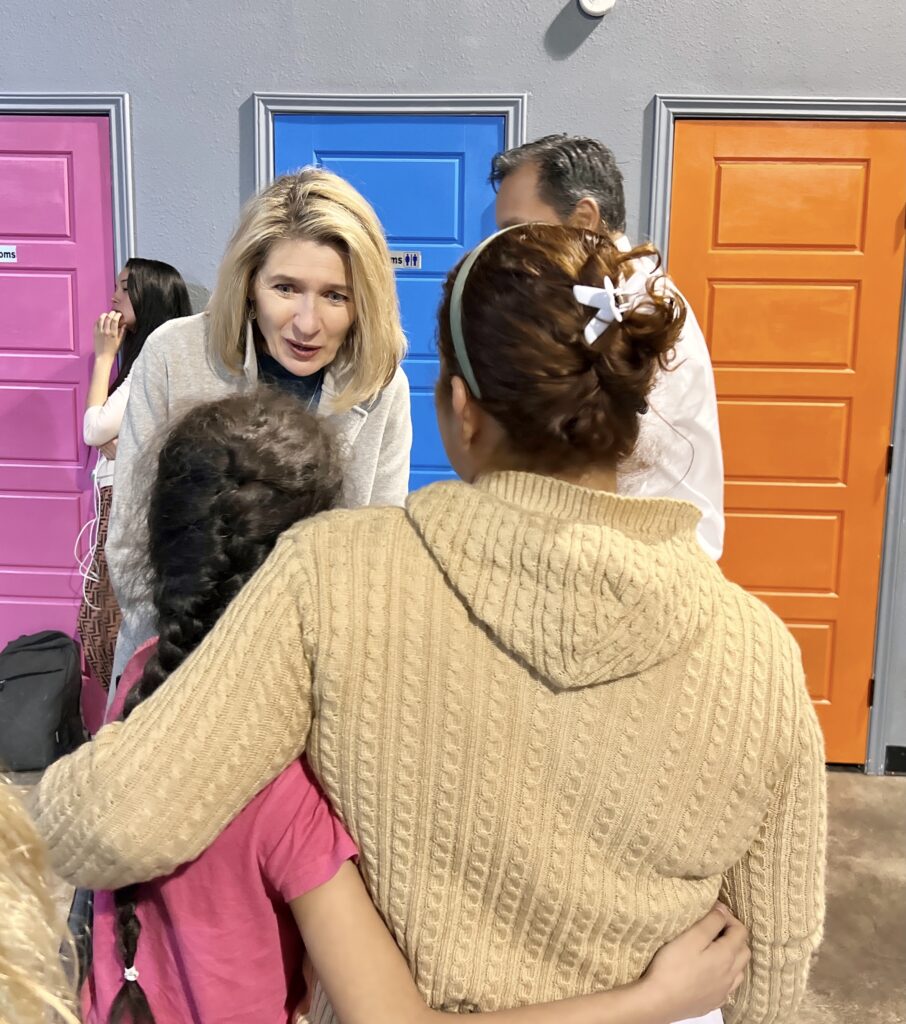
Gonzales explained, “If they are amenable to Title 42 policy, which is a health policy, we have directives with countries, like Guatemala, Honduras and Mexico, that we can send them back.” There are some people who are released under Title 8. Title 8 allows them to be released within the United States, with documentation. Those people must notify I.C.E. upon reaching their final destination. Gonzales said, “We release them with the understanding that they are going to be checking in while they are awaiting their asylum proceeding.” The Title 8 people are those that come into the migrant centers, like Mission: Border Hope. They have been processed through legal channels and permitted to enter the country.
